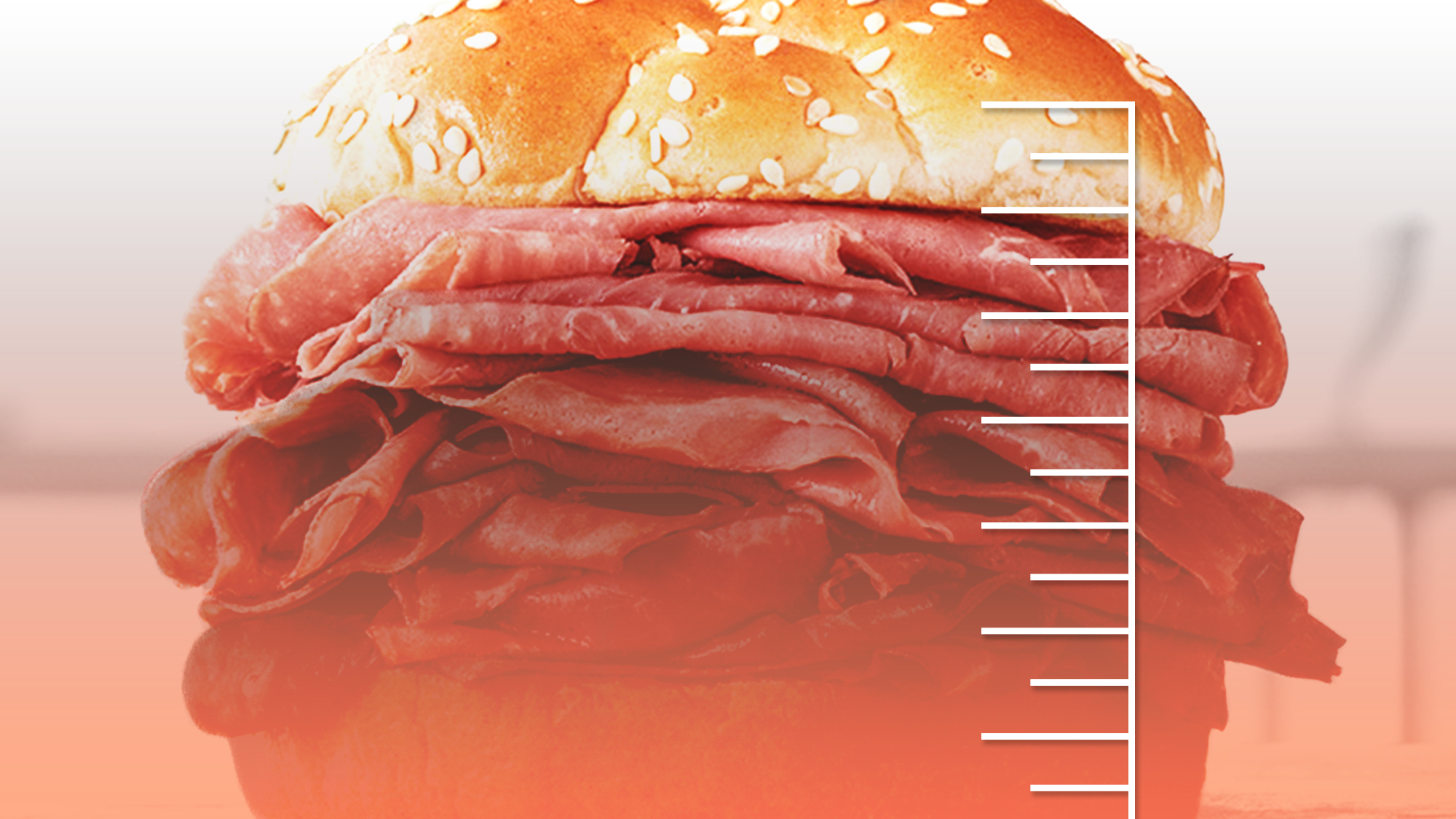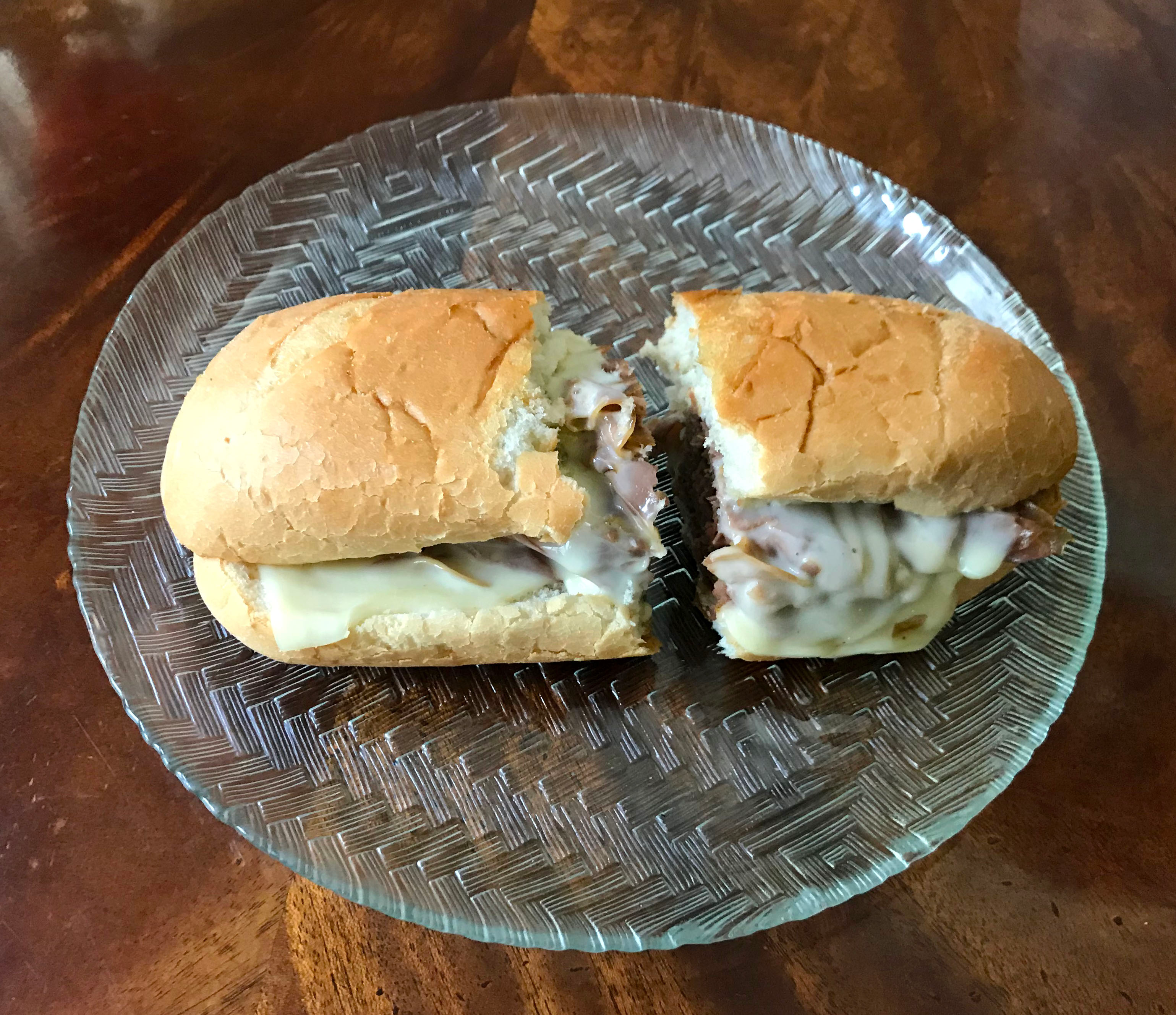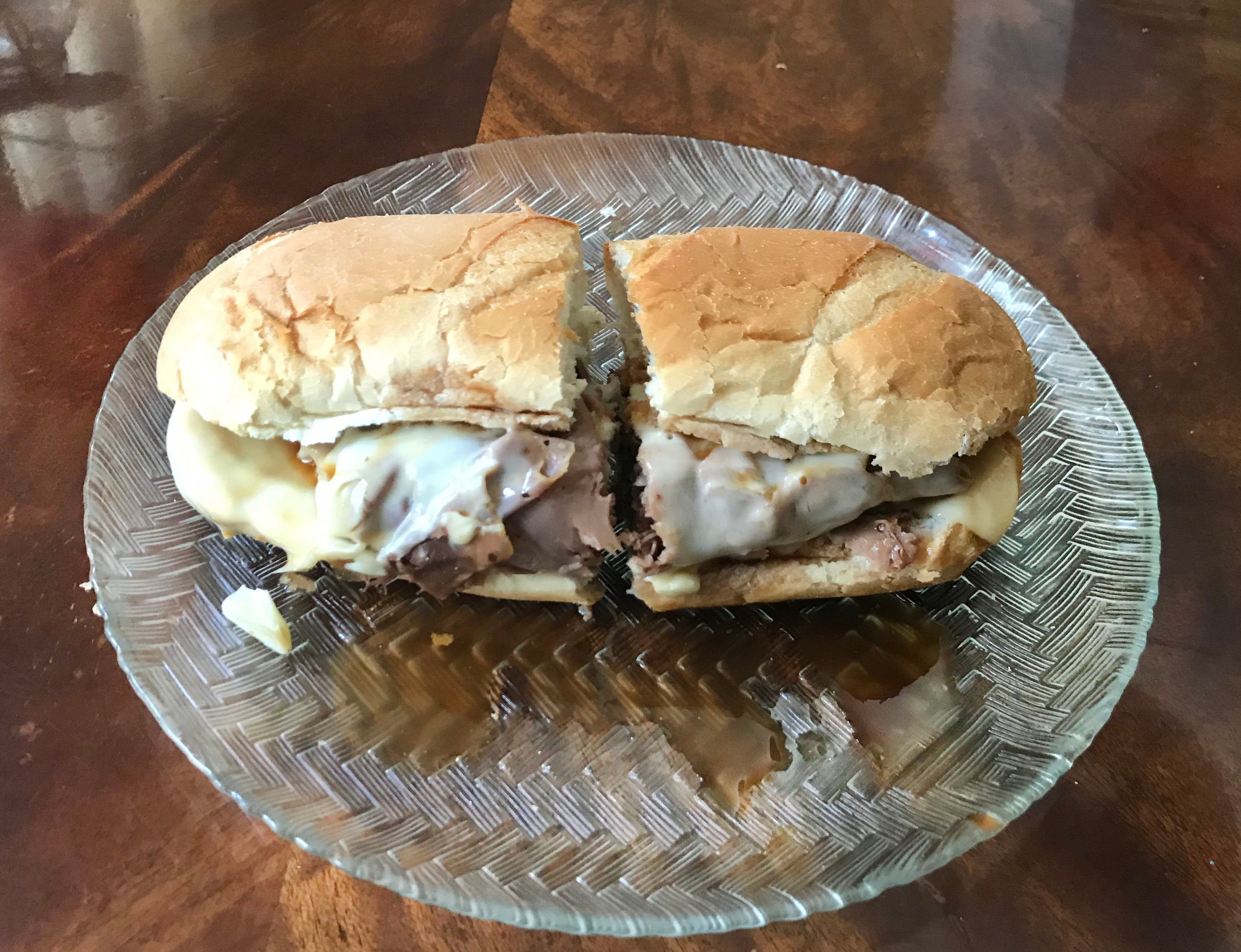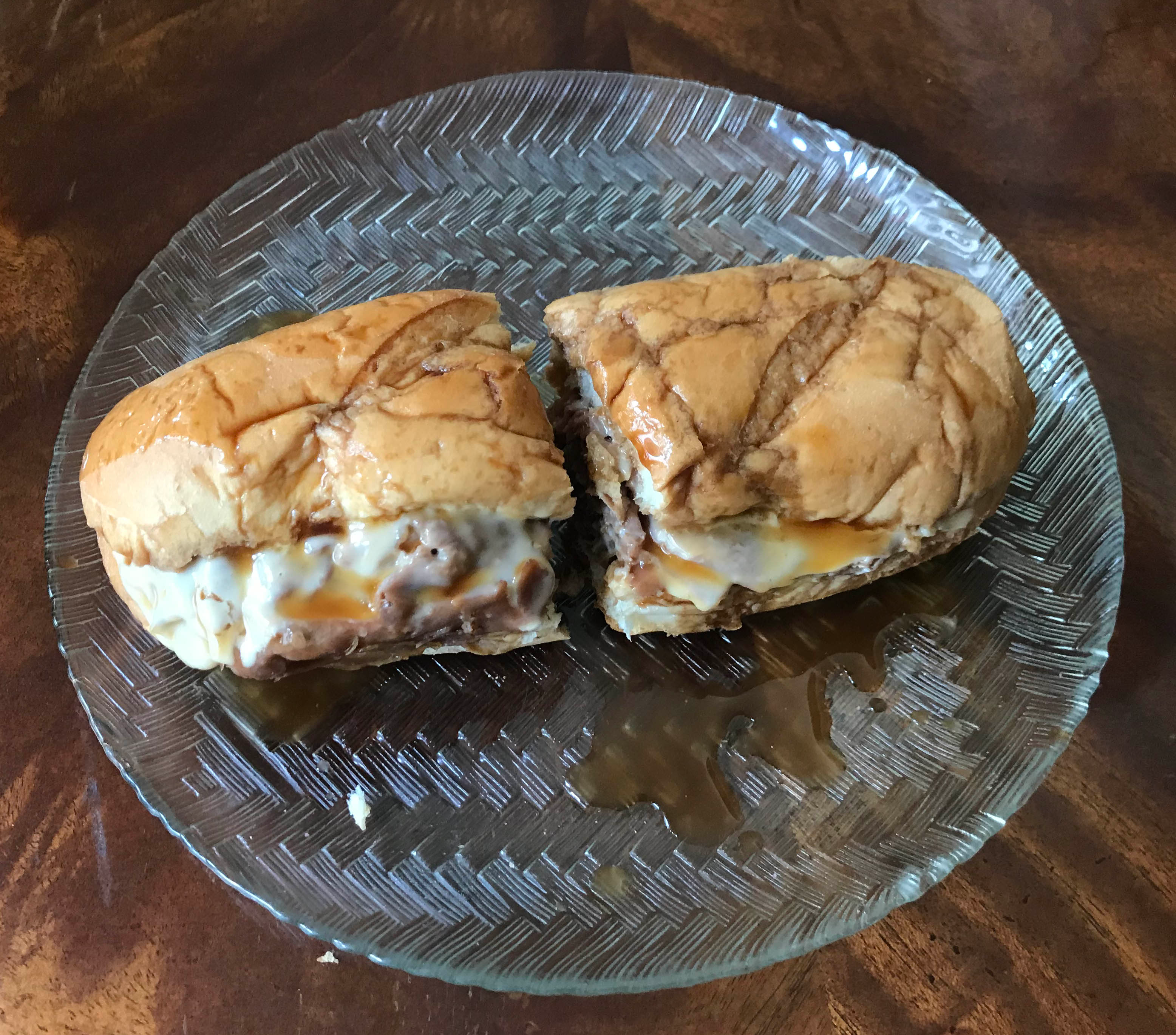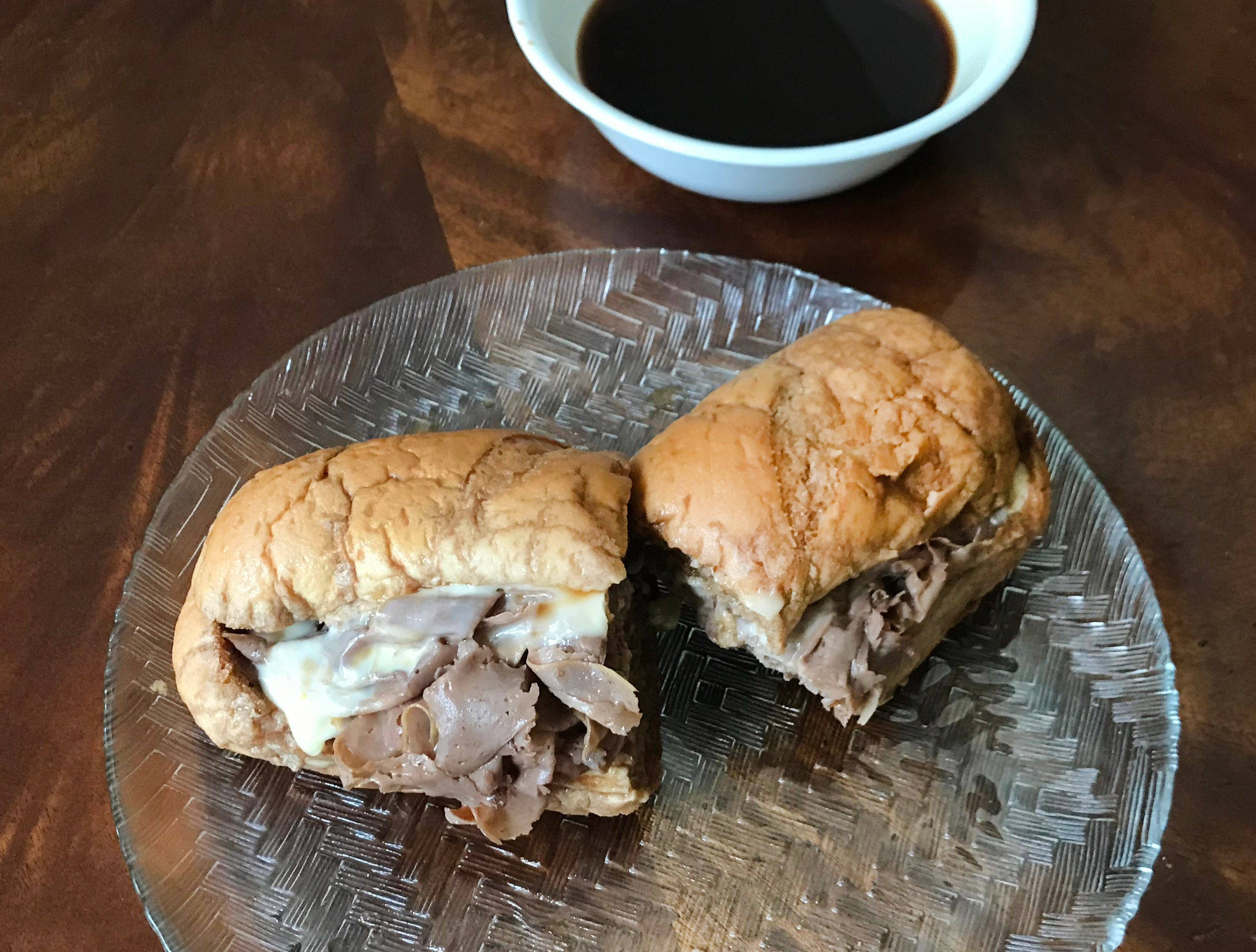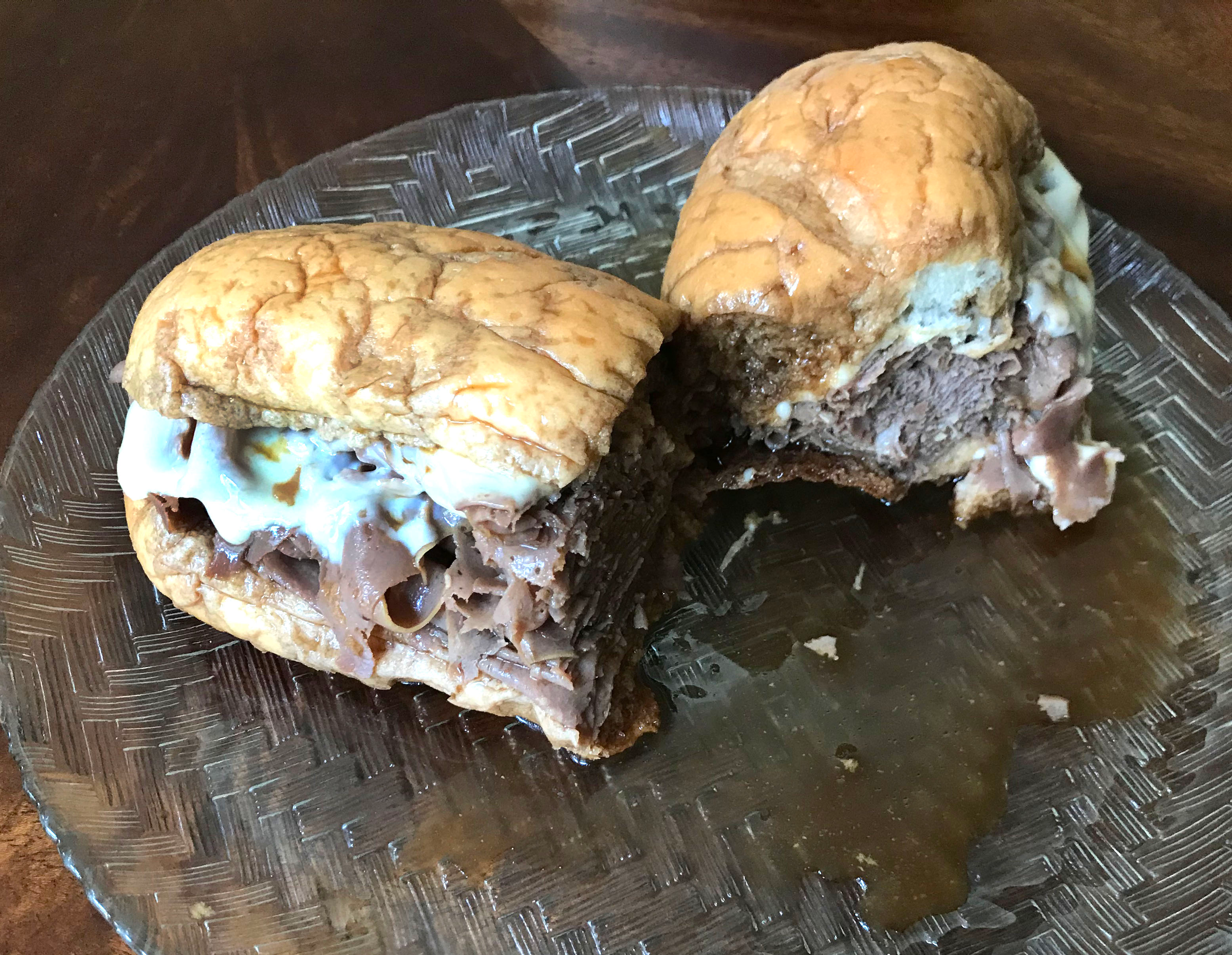The Takeout Investigates: What's The Ideal Level Of Jus Saturation For A Beef Sandwich?
Since the early 20th century, the beef sandwich in its many forms has towered as a culinary staple across the U.S. In most instances, the form is roughly the same: thin, deli-sliced beef piled heavy onto a generously sized roll. And what distinguishes this from a simple protein-and-carb combo is the salty flavor and gentle textural softening of the sandwich when served au jus.
Depending on the region in which you're eating your beef sandwich, there are minor variations in preparation. In Chicago, where the Italian beef reigns supreme, customers can request a topping of sweet peppers and/or giardiniera, lending an extra pop of pickled flavor (and a light, damp crunch of sorts) to the beef. It's also where you're likeliest to experience the joys of "dipped beef"—more on that momentarily. Around Buffalo, New York, where the beef on weck rose to prominence, the meat is served on a kummelweck roll topped with caraway seeds and salt, with a horseradish-layered top bun kissing the jus before it's served. And perhaps the most common example is the nationally available French dip, in which the sandwich is served au jus, the liquid topping arriving as a separate dip in order to allow the individual to determine their preferred level of saturation.
But regardless of the sandwich particulars, just how much jus is enough? And how much is too much, if such a point exists? To answer this question, The Takeout ran a formal test on one of the most widely accessible beef sandwiches: Arby's French Dip and Swiss. By adding progressively more jus to each cheese-topped sandwich as we went along, we were able to experience the full beef sandwich spectrum, from bone-dry to so-soggy-it's-decomposing. Here are our findings.
0% jus—Completely Dry
A roast beef sandwich sans jus is just a deli-style beef sandwich. Arby's sub roll is a bit smaller than the cut Italian or French bread portions typically associated with beef sandwiches, and yet without the jus, the light crunch of the bread's crust and the cheese overwhelm even the most generously piled beef portions. The combination of the melted Swiss cheese and the already-moist beef gives the sandwich a damp texture even before the jus is introduced. If you're inclined to lean a bit more vanilla with your sandwich choices, this is still a pleasing roast beef sandwich.
25% jus
Unsurprisingly, spooning even a light portion of jus onto each half of the sandwich leads to dramatic changes in both taste and texture. Once the jus hits the sandwich, it's the first and most dominant flavor. Particularly given the liquid's high salt content, it's crucial the bread is still holding together and lightly edge-crusty at this stage to offset that. Structurally, it's still solid enough to maintain more than one texture at a time while also being moist enough to not feel dry. If you're a light French dipper, this is your likely sweet spot. Also, this is the last point at which there won't be jus everywhere on and near you while eating.
50% jus—Half Wet
Now we're off to the races. By ladling on enough jus to saturate the bread and contents alike, the sandwich is now struggling to retain structural integrity. Picking up and/or placing it will lead to a light but unavoidable squirt of jus, and it's around this point that you'll notice a growing inability to distinguish the beef flavor itself. The thick, chewy texture is still there, but the tastes of both cheese and beef are barely evident above the liquid's salt. The sensation isn't entirely dissimilar from knocking back a greasy slider; a quick burst of the sandwich's cheese and beef is followed and overwhelmed by a sustained salt wave.
75% jus
In some areas of the U.S., a beef sandwich served au jus will be sold as "dipped beef," which carries with it the assumption that a heavy saturation of jus is a customer's preferred starting point. Prior to being served, the sandwich is baptized in the liquid, submerged for just a flash. The bread is meant to absorb as much as it can, but at this density there's no firmness left to the roll. It's now a sponge, bearing a striking resemblance to both the appearance and presumable texture of a human brain. The bite disintegrates within milliseconds. The weight of the sandwich effectively doubles. A puddle manifests itself underneath the pile of beef and what was once bread. The only taste that stands out is broth, by which we mean salt.
100% jus—Completely Saturated
Frankly, once you've submerged a sandwich in a full bowl of jus, the distinction between a quick dunk and a 60-second steep is more or less negligible. Allowing it to soak only speeds up the disintegration process, and once it leaves the bowl and enters your hand, it begins to slide through your fingers, searching for any space it can find to escape from the being that treated it this way. What you are now eating is less a sandwich than a regularly-erupting hillock of meat and cheese. It bears little resemblance to the original sandwich, and it's difficult to shake the impression that shotgunning the jus on its own would have roughly the same effect on the palate.
While it's not ultimately for us to say what your preferred jus level should be, in the interest of a well-informed recommendation, we'll point you to roughly 25% saturation. While even 50% still gives you that balance of crunchy crust, savory meat, and the just slickness, a little bit goes a long way.
Of course, not all jus is made equal, and different blends will call for different measurements. (We wholly encourage you to conduct your own tests, on your own time.) Even from here, we can already hear a handful of you loudly admonishing us for our bias against the full sandwich cannonball, so here's your reminder that there really isn't a bad way to enjoy a beef sandwich. If it tastes good, and it gets your beef to where you want it, then the jus has done its job.
